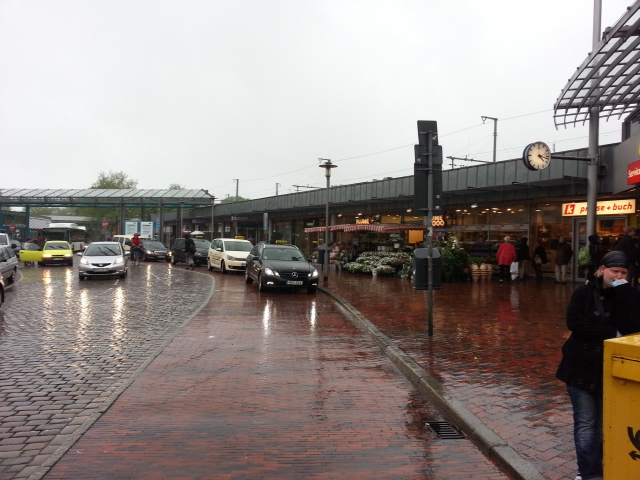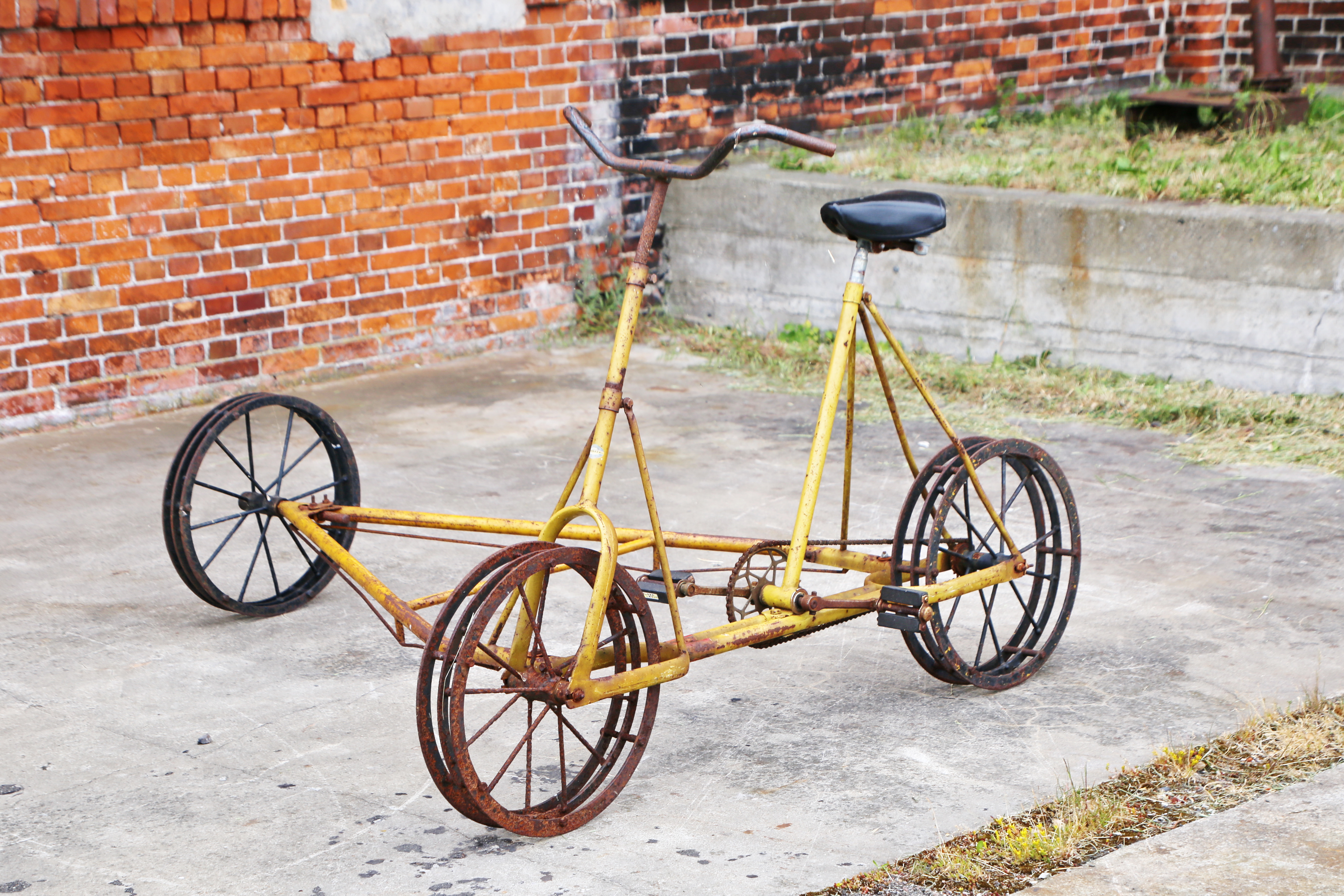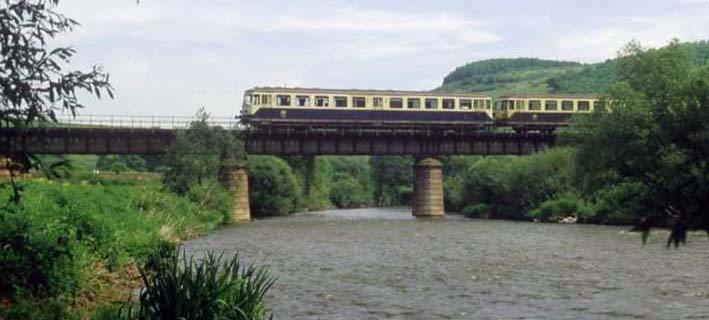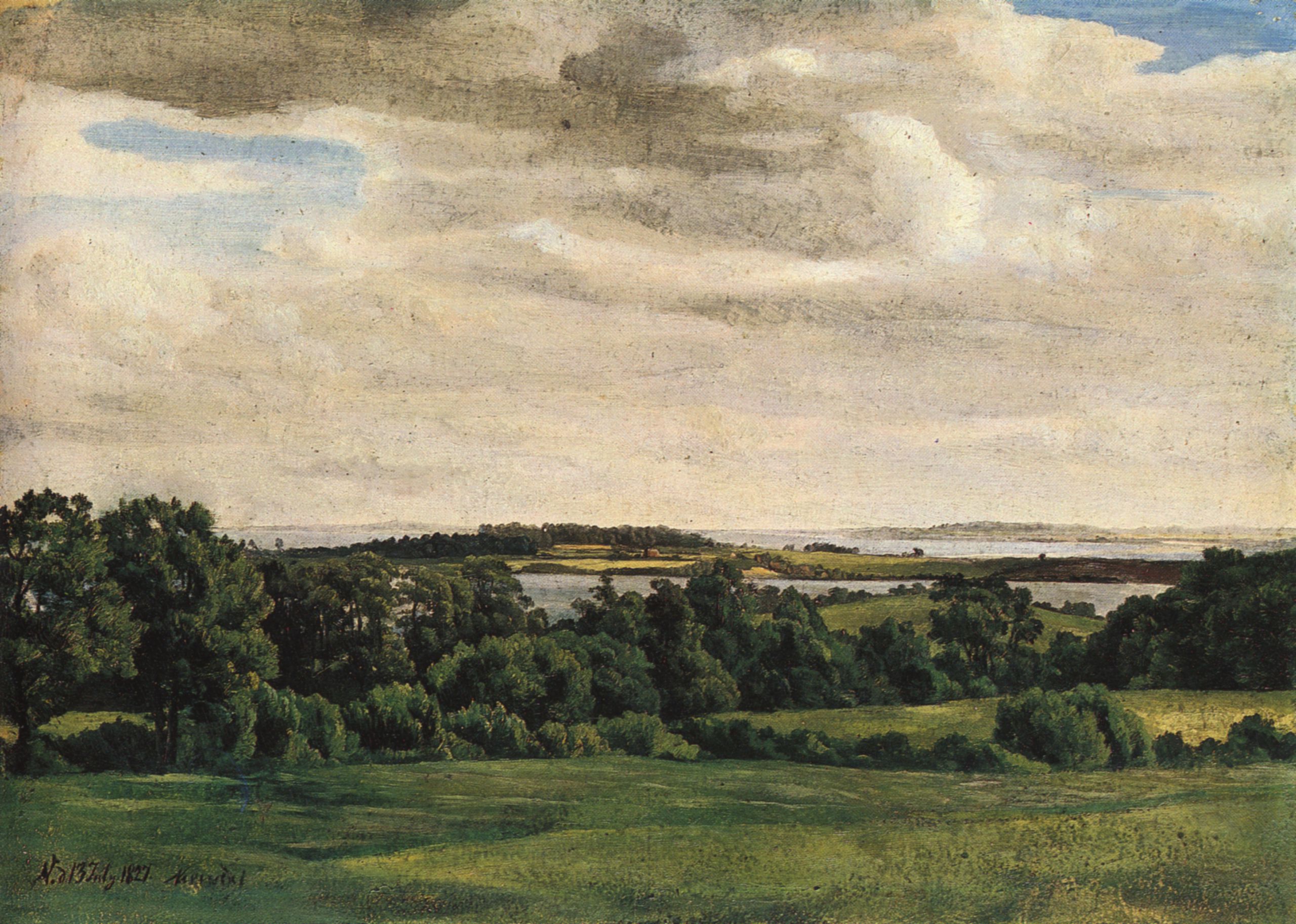|
Neumünster–Ascheberg Railway
The Neumünster–Ascheberg railway runs from the mid Holstein city of Neumünster east to Ascheberg (Holstein) near Plön in the German state of Schleswig-Holstein. The 26 kilometre line is currently closed, although there is a campaign to reopen it. Geography The line runs in the west through the flat, mostly agricultural landscape known as geest. In the east it reaches Holstein Switzerland, which is dominated by lakes and terminal moraines. History The Neumünster–Ascheberg–Eutin–Neustadt line was opened on 31 May 1866. The line was operated by the Altona-Kiel Railway Company (, AKE), which was nationalised in 1884. In railway timetables, the line was soon shown in three sections. From Ascheberg (Holst) to Eutin it was considered part of the Kiel–Lübeck railway. The easternmost section from Eutin to Neustadt was now managed as a separate line (the Eutin–Neustadt railway). From 1912 to 1961 the line was crossed on a bridge by the Kiel-Segeberg Light Railway ... [...More Info...] [...Related Items...] OR: [Wikipedia] [Google] [Baidu] |
Schleswig-Holstein
Schleswig-Holstein (; ; ; ; ; occasionally in English ''Sleswick-Holsatia'') is the Northern Germany, northernmost of the 16 states of Germany, comprising most of the historical Duchy of Holstein and the southern part of the former Duchy of Schleswig. Its capital city is Kiel; other notable cities are Lübeck and Flensburg. It covers an area of , making it the 5th smallest German federal state by area (including the city-states). Historically, the name can also refer to a larger region, containing both present-day Schleswig-Holstein and the former South Jutland County (Northern Schleswig; now part of the Region of Southern Denmark) in Denmark. Schleswig, named South Jutland at the time, was under Danish control during the Viking Age, but in the 12th century it became a duchy within Denmark due to infighting in the Danish Royal House. It bordered Holstein, which was a part of the Holy Roman Empire. Beginning in 1460, the King of Denmark ruled both Schleswig and Holstein as the ... [...More Info...] [...Related Items...] OR: [Wikipedia] [Google] [Baidu] |
Neumünster
Neumünster () is a city in the middle of Schleswig-Holstein, Germany. With more than 79,000 registered inhabitants, it is the fourth-largest municipality in Schleswig-Holstein (behind Kiel, Lübeck and Flensburg). The ''Holstenhallen'' and the ''Stadthalle'' make the city an important trade fair location. History The city was first formally mentioned as ''Wippendorp im Gau Faldera'' in 1127. In that year, the Bishop Vicelinus was sent there by the Archbishop of Bremen to perform missionary work. By 1136, Vicelinus built a new monastery there (Latin: ''novum monasterium,'' Greco-Latin'': Neomonasterium,'' German'': neues Kloster'' or ''neues Münster''). The name "Novum monasterium" eventually replaced the previous names of Wippendorf and Faldera and led to the current name. In April 1870, Neumünster received town privileges. Since 1903 Neumünster is a so-called "independent city" (German: ''Kreisfreie Stadt'') as it is not part of a district (German: ''Kreis''). Gro� ... [...More Info...] [...Related Items...] OR: [Wikipedia] [Google] [Baidu] |
Draisine
A draisine () is a light auxiliary rail vehicle, driven by service personnel, equipped to transport crew and material necessary for the maintenance of railway infrastructure. The eponymous term is derived from the German inventor Baron Karl Drais, who invented his '' Laufmaschine'' ( German for "running machine") in 1817, which was called ''Draisine'' in German (''vélocipède'' or ''draisienne'' in French) by the press. It is the first reliable claim for a practically used precursor to the bicycle, basically the first commercially successful two-wheeled, steerable, human-propelled machine, nicknamed hobby-horse or dandy horse. Later, the name draisine came to be applied only to the invention used on rails and was extended to similar vehicles, even when not human-powered. Because of their low weight and small size, they can be put on and taken off the rails at any place, allowing trains to pass. In the United States, motor-powered draisines are known as speeders while hu ... [...More Info...] [...Related Items...] OR: [Wikipedia] [Google] [Baidu] |
Marsh Railway
The Marsh Railway () is a main line in the state of Schleswig-Holstein in Germany that links the stations of Elmshorn in the south and Westerland on the island of Sylt in the north. It is part of long route from Hamburg-Altona to Westerland (Sylt) and is listed in the Deutsche Bahn timetables as . The first part of it was opened in 1845 and is one of the oldest lines in Germany. Route The Marsh Railway, as its name suggests, mainly runs through marshlands. There are also some sections of the line that run through the higher-lying geest. The line branches off the Hamburg-Altona-Kiel railway line in Elmshorn. From Elmshorn, it runs in an arc via Glückstadt to Itzehoe. The line then crosses the Kiel Canal on the high Hochdonn High Bridge. The bridge's total length is and its main span over the channel is long. There is also a bascule bridge north of Husum station. Between Klanxbüll and Morsum stations the line runs across the Hindenburgdamm (causeway) through the No ... [...More Info...] [...Related Items...] OR: [Wikipedia] [Google] [Baidu] |
DB Class ETA 150
The accumulator cars of Class ETA 150 (Class 515 from 1968) were German railcars used extensively by Deutsche Bundesbahn (DB) for 40 years. They ran on both main and branch lines. By comparison with the Uerdingen railbus, the railcars were quieter (despite the typical whine of their DC motors), rode more smoothly on the rails owing to the weight of the batteries, and were pollution-free (no smoke or fumes). They were very popular with passengers, who nicknamed them ''Akkublitz'' (''Battery Lightning''), ''Säurebomber'' (''Acid Bombers''), ''Steckdosen-InterCity'' (''Socket InterCitys''), ''Taschenlampen-Express'' (''Pocket Torch Express''), or ''Biene Maja'' (''Maya the Bee'' – because of the sound they made when at speed). History As a result of many years of favourable experience with this type of vehicle (the Prussian state railways had placed accumulator railcars in service as early as 1907 – these would later become Deutsche Reichsbahn's Class ET ... [...More Info...] [...Related Items...] OR: [Wikipedia] [Google] [Baidu] |
Heide
Heide (; Holsatian: ''Heid'') is a town in Schleswig-Holstein, Germany. It is the capital of the ''Kreis'' (district) Dithmarschen. Population: 22,000. The German word ''Heide'' means "heath". In the 15th century four adjoining villages decided to build a church in the "middle of the heath". This remained the town's name to date. The exact foundation date is now unknown, but by 1447 Heide was already the main village of Dithmarschen. At this time Dithmarschen was an independent peasant republic. Heide became a town in the 19th century. Heide has the largest un-built-upon market square in Germany, with 4.7 hectares. It is used primarily as a parking lot and has approximately 500 parking spaces. In 2016, the city staged 3 car-free Sundays on the market square for the first time. Sport The association soccer club Heider SV plays in the Oberliga Schleswig-Holstein (V). Education There are some notable educational institutes in the town * BTZ Heide gGmbH * RKiSH-Akademie * Volk ... [...More Info...] [...Related Items...] OR: [Wikipedia] [Google] [Baidu] |
Büsum
Büsum () is a fishing and tourist town in the district of Dithmarschen, in Schleswig-Holstein, Germany. It is situated on the North Sea coast, approx. 18 km southwest of Heide. Büsum is also the administrative seat of the ''Amt'' ("collective municipality") Büsum-Wesselburen. History and geography The first documented mention of Büsum (as an island) dates from the year 1140. The island's name on medieval documents changed several times from the original Bivsne (1140) to Busin (1208), Busen (1281), and Buzen (1447). Büsum's medieval history has been documented through the chronicles of Neocorus (Johannes Adolph Köster), a pastor and teacher in Büsum during the 16th century. Geographical history During medieval times, Büsum was an island with three villages, Süderdorp, Middeldorp and Norddorp. Devastating floods in 1362 (Grote Mandrenke), 1436, and 1570 ( All Saint's Flood) drowned most of the island and destroyed the two settlements Süderdorp and Middeldorp. The ... [...More Info...] [...Related Items...] OR: [Wikipedia] [Google] [Baidu] |
Eutin–Neustadt Railway
The Eutin–Neustadt railway was a 16-kilometer-long, non-electrified branch line, running from Eutin to Neustadt in Holstein in the German state of Schleswig-Holstein. Geography The line ran through the terminal moraine of Ostholstein. It joined the county town of Eutin with the Baltic port of Neustadt. These were three stations on the line: Röbel, Bujendorf and Oevelgönne. Of these, only Bujendorf had a substantial station building. All three stations were quite far from population centres. The line was part of an east-west axis, connecting Neustadt, Neumünster and Büsum. History The Neumünster–Ascheberg–Eutin–Neustadt line was opened on 31 May 1866. The line was operated by the Altona-Kiel Railway Company (, AKE), which was nationalised in 1884. In railway timetables, the line was soon shown in three sections. From Eutin to Ascheberg it was considered part of the Kiel–Lübeck railway. The westernmost section from Ascheberg to Neumünster was now managed as ... [...More Info...] [...Related Items...] OR: [Wikipedia] [Google] [Baidu] |
Altona-Kiel Railway Company
The Altona-Kiel Railway Company (, AKE) was a joint-stock company, established under the law of Denmark in personal union with the Duchy of Holstein, that built and operated an 105 km railway line between Altona and the Baltic Sea port city of Kiel. Altona was at that time the second largest city under Danish rule and the railway line was the first built in Danish-controlled territory. Formation Background The company was founded in December 1840 on the initiative of merchants from Altona and Kiel. Among the initiators in Kiel were Georg Hanssen and Johann Christian Kruse. The participants sought to improve the transport of their goods to markets by connecting the North and Baltic Seas and they agreed to promote this objective as members of the Altona-Kiel railway committee. In 1833, the economist Friedrich List had proposed a network of railways in Germany, including a rail link between the Hanseatic cities of Hamburg and Lübeck. In 1835, this proposal was rejected by ... [...More Info...] [...Related Items...] OR: [Wikipedia] [Google] [Baidu] |
Terminal Moraine
A terminal moraine, also called an end moraine, is a type of moraine that forms at the terminal (edge) of a glacier, marking its maximum advance. At this point, debris that has accumulated by plucking and abrasion, has been pushed by the front edge of the ice, is driven no further and instead is deposited in an unsorted pile of sediment. Because the glacier acts very much like a conveyor belt, the longer it stays in one place, the greater the amount of material that will be deposited. The moraine is left as the marking point of the terminal extent of the ice. Formation As a glacier moves along its path, the surrounding area is continuously eroding. Loose rock and pieces of bedrock are constantly being picked up and transported with the glacier. Fine sediment and particles are also incorporated into the glacial ice. The accumulation of these rocks and sediment together form what is called glacial till when deposited. Push moraines are formed when a glacier retreats from ... [...More Info...] [...Related Items...] OR: [Wikipedia] [Google] [Baidu] |
Holstein Switzerland
Holstein Switzerland () is a hilly area with a patchwork of lakes and forest in Schleswig Holstein, Germany, reminiscent of Swiss landscape. Its highest point is the Bungsberg (168 metres above sea level).Carl Ingwer Johannsen & Eckardt Opitz: ''Das grosse Schleswig-Holstein-Buch.'' Hamburg 1996 It is a designated nature park as well as an important tourist destination in Northern Germany situated between the cities of Kiel and Lübeck. Geography Holstein Switzerland lies in eastern Schleswig-Holstein. This picturesque region in the historical county of Wagria has no precise political or geographic boundaries. Most of the area falls within the districts of Ostholstein and Plön, roughly between the cities of Lübeck and Kiel and extends as far north as the Baltic coast. Its major towns include Bad Malente-Gremsmühlen, Lütjenburg, Oldenburg in Holstein, Preetz and the old '' Residenz'' seats of Eutin and Plön. The charm of this region is its ever-changing landsca ... [...More Info...] [...Related Items...] OR: [Wikipedia] [Google] [Baidu] |







